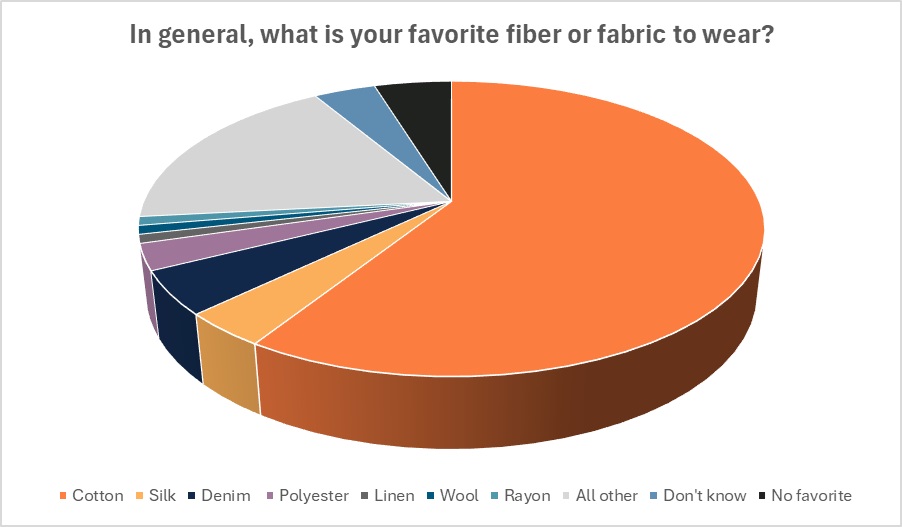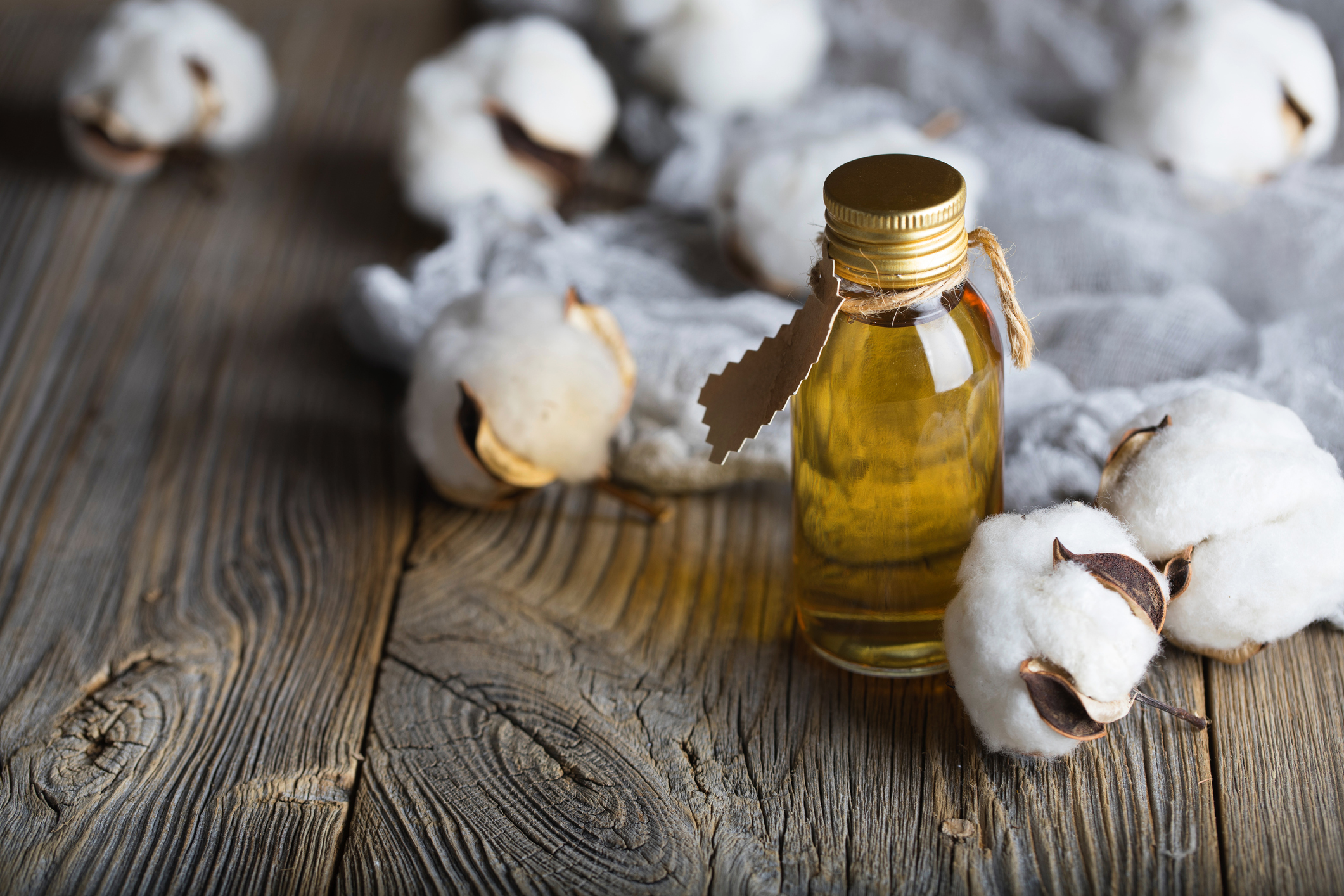The Nineties pop act C+C Music Factory had a hit with the song, “Things That Make You Go Hmmmm…,” which was based on a running bit comedian Arsenio Hall had on his then-late-night talk show. Today, it’s a catchphrase that can be used with cotton. That’s right. You may think you know cotton, but there are a number of products that come from this humble plant that just might make you go, “Hmmmm.”
Here’s the deal: Upland cotton, or the most common species of cotton, is known as an “and” crop because besides the cottony fiber the plant is known for, every harvest yields a multitude of byproducts. And it’s done without requiring any extra land, water, or fertilizer.
Cottonseed oil is part of the original recipe…If you want to maintain consistent flavor from one generation to the next, you have to adhere to your original recipe.
Burt Benrud, Vice President, Café Du Monde
Remarkably, for each 480-pound bale of cotton that’s produced, there’s an average of roughly 700 pounds of seed. And the short, white, hair-like strands that remain on each seed after the cotton is removed isn’t leftover cotton – it’s cellulose, known as “linters.” It’s these linters and seeds that are responsible for some diverse and possibly surprising cotton byproducts.
For starters, have you ever been to Louisiana and enjoyed beignets at the famed Café Du Monde? Well, those are cooked in cottonseed oil.
“Cottonseed oil is part of the original recipe,” says Café Du Monde’s Burt Benrud, vice president. “If you want to maintain consistent flavor from one generation to the next, you have to adhere to your original recipe.”
Cottonseed oil is used in products like salad dressing and margarine. And scientists with the U.S.D.A’s Agricultural Research Service’s Southern Regional Research Center in New Orleans and at Mississippi State University have developed a cotton plant with seed oil that is higher in oleic acid than previous varieties. As the USDA states, oleic acid is commonly used for preventing heart disease and reducing cholesterol.
Further favorable health aspects come from a study, published in the May 2022 issue of The Journal of Nutrition, that found the consumption of polyunsaturated fats – which are found in cottonseed oil – may be beneficial in reducing high levels of low-density lipoprotein (LDL), known as the “bad” cholesterol, in high-risk adults. And in 2018, researchers at the University of Georgia found a high-fat diet enriched with cottonseed oil improved the cholesterol profiles of young adult men. While studies on this subject are still in their early stages, the information being gathered is promising.
Cottonseed oil is also used in hair and skincare products because of its high vitamin E and antioxidant content, according to Dr. Hadley King, a New York dermatologist.
“Cottonseed oil contains high concentrations of vitamin E and fatty acids,” Dr. King says. “These ingredients can help moisturize the hair, increase luster and help decrease hair breakage as well.”
Cottonseed oil also finds its way into products like toothpaste and biodiesel.
But that’s not all cottonseed oil has to offer. A study shows cooking with cottonseed oil can contribute toward reduced climate change impacts than other cooking oil options. The study looked at the life cycles – cultivation, milling, refining and transportation – of U.S. cottonseed oil, global soybean oil, U.S. canola oil, and Indonesian and Malaysian palm oil. The researchers then analyzed the impacts of each of these life cycle stages on various environmental impact categories: global warming, and water-, resource- and air-related impacts.
Since cottonseed oil is a byproduct of cotton lint production, the life cycle impacts of cotton cultivation are split between cotton lint used for textiles and cottonseed used for oil. When compared to other the frying oils, cottonseed oil had the lowest climate change impacts. Further, cottonseed oil production showed a lower impact on air quality, the depletion of resources like fossil fuels and it performed well in some water-related aspects. When one considers the average American eats 29 pounds of french fries each year, restaurants that switch their frying oil to cottonseed oil could see a substantial improvement toward their climate goals.
Consumers would likely welcome knowing about this product diversity, especially since it’s derived from the cotton plant, which is also responsible for their favorite fiber (62 percent), according to the 2023 Cotton Incorporated Lifestyle Monitor™Survey. And according to the 2023 Global Lifestyle Monitor™ Survey, the majority of consumers (62 percent) say their concerns about environmental change and resource depletion are very real and require change in our behaviors. Also, most consumers (68 percent) consider cotton to be safe for the environment.

The diversity of the cotton plant goes beyond oil, as linters can also be found in food products like ice cream and beer – and are used to make paper products. As explained by papermaking company Arnold Grummer’s, when making paper, the seeds are run through a linter machine that removes the tiny fibers. These fibers are put through a pulping process, and then the pulp is pressed into sheets and dried.
Even the cottonseed hulls are put to work, as they are used in non-food products like soap and fertilizer.
Of course, the cottonseed itself is quite valuable as an excellent source of protein – for animals. Whole cottonseed has energy, protein and fiber in greater concentrations than many other types of feed. Dairy producers nationwide recognize it as a cost-effective premier feedstuff for lactating cows. More than 50 percent of the annual supply of whole cottonseed is consumed by dairy cattle.
South Georgia farmer Patrick Shivers says he likes to give his cows cottonseed to “pep them up a little bit.” This makes sense because whole cottonseed has high protein (23 percent) that comes from the seed kernel, high energy in the form of fat (20 percent) and crude fiber from the fuzzy linters (24 percent) on a dry matter basis. These attributes make whole cottonseed attractive for feeding high producing, early lactation dairy cows( it can increase milk output and boost butterfat), as well as cows under heat stress who may have a reduced appetite.
So, for those who have only known cotton in its textile form, these myriad other uses for the unassuming plant truly are enough to make you go, “Hmmmm.”
Learn more about cotton as a versatile “and” crop.
